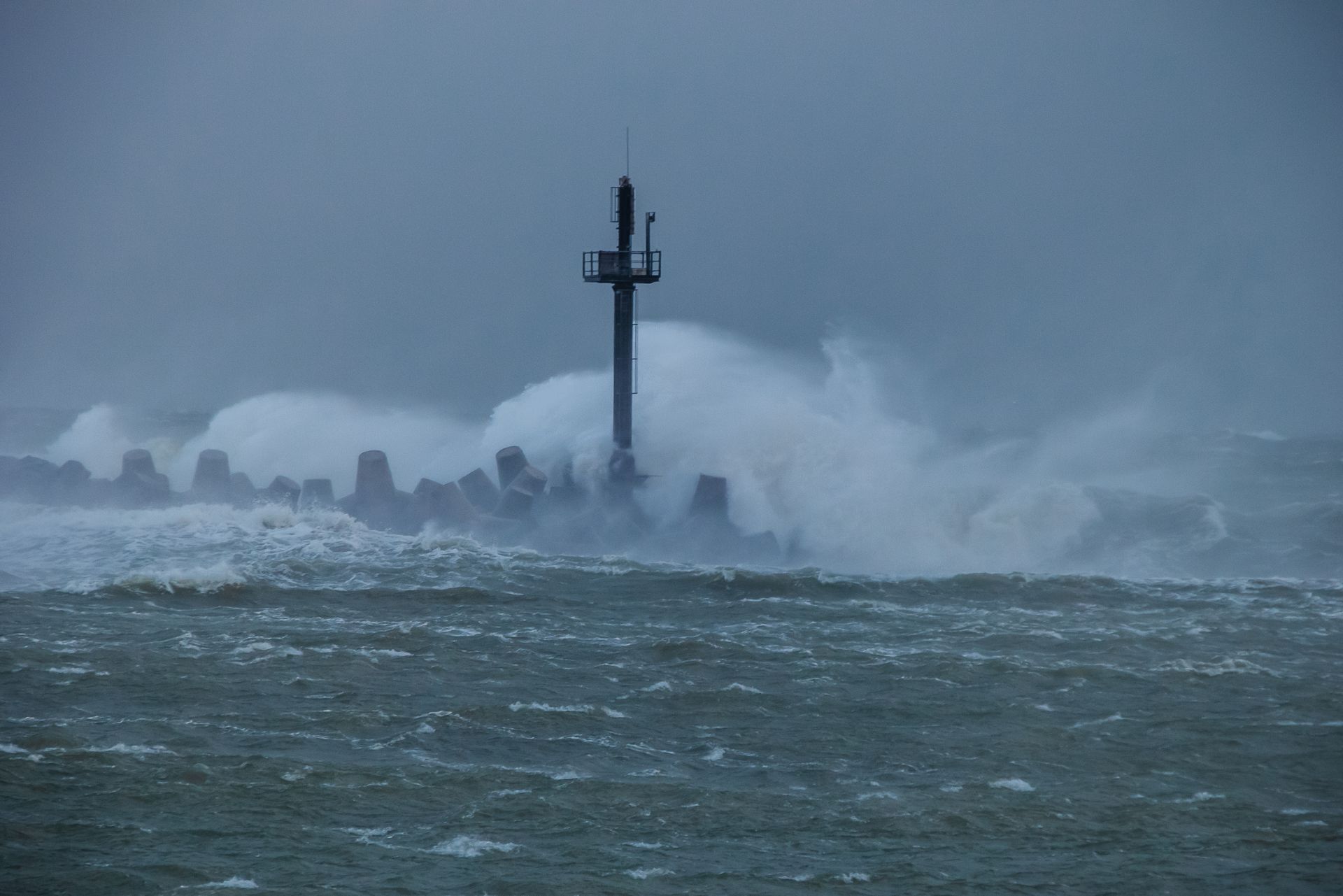Top 3 Recommended Policies

New York’s commercial property owners face unique challenges when it comes to hurricane insurance. With millions of homes and businesses exposed to potential hurricane wind damage, understanding the nuances of commercial hurricane insurance in this region is more important than ever. Recent trends in insured losses, rate changes, and climate impacts are reshaping the insurance landscape, making it crucial for commercial property owners and stakeholders to stay informed.
In 2024, global insured losses soared to $140 billion, the highest since 2017, underscoring the increasing financial impact of extreme weather events worldwide. This context highlights why commercial hurricane insurance in New York is evolving rapidly to address growing risks and changing market conditions. For those looking to protect their investments, this comprehensive guide covers everything you need to know about commercial hurricane insurance in New York, from risk exposure to recent market developments and expert insights.
Understanding Hurricane Risk in New York
New York City alone has approximately 3.8 million single-family homes exposed to hurricane wind damage, with an estimated reconstruction cost of $1.9 trillion. While residential exposure is staggering, commercial properties also face significant risks due to their scale and value. Hurricanes can cause extensive wind damage, flooding, and business interruptions, all of which can lead to substantial financial losses without adequate insurance coverage.
Historically, New York has not been the primary target for hurricanes compared to southern states, but recent research suggests this may be changing. Dr. Sam Phibbs, co-author of the study "Insured U.S. Hurricane Loss Under a 2°C Warmer Climate", notes that major storms could increasingly impact cities that have historically seen fewer hurricanes. This shift means commercial property owners in New York must reassess their risk profiles and insurance needs accordingly.
Moreover, the gap between economic and insured losses remains a critical concern. For example, Hurricane Helene in 2024 highlighted this disparity, with insured losses estimated in the single-digit billions while economic losses reached triple digits. This gap underscores the importance of having comprehensive insurance coverage that can address both direct physical damage and broader economic impacts.
As climate change progresses, the frequency and intensity of hurricanes are expected to increase, further complicating the risk landscape for New York. The city’s unique geography, with its extensive coastline and densely populated urban areas, amplifies the potential for catastrophic impacts. Flooding from storm surges can inundate neighborhoods, disrupt transportation networks, and overwhelm emergency services, leading to prolonged recovery periods. In addition, the aging infrastructure in many parts of the city may not be equipped to handle the increased rainfall and flooding associated with more severe storms, raising concerns about public safety and economic stability.
In light of these evolving threats, local governments and organizations are beginning to implement more robust disaster preparedness and response strategies. Initiatives such as improved forecasting models, enhanced building codes, and community awareness programs are being prioritized to mitigate risks. Furthermore, collaboration between private and public sectors is crucial in developing resilient infrastructure that can withstand future storms. As New Yorkers face an uncertain future regarding hurricane activity, proactive measures will be essential to safeguard both lives and livelihoods in the face of increasing natural disasters.

Current Market Trends in Commercial Hurricane Insurance
The commercial insurance market in New York and across the U.S. is experiencing notable changes. In the third quarter of 2024, the U.S. commercial insurance sector saw a composite rate increase of 3.8%, with property insurance rates rising by 5.7%. These increases reflect insurers’ responses to heightened risks and recent loss experiences.
Despite these rate hikes, there are signs of stabilization. The Insurance Information Institute reports that the U.S. commercial property insurance segment is showing signs of turning a corner, with rates stabilizing and the market on track for steady growth. This trend is encouraging for commercial property owners who have faced steep premium increases in recent years.
However, the balance between risk and coverage cost remains delicate. As noted in the Insurance Journal, "The risk of damage is up against the cost of coverage for many commercial property owners." This tension means that businesses must carefully evaluate their insurance policies to ensure adequate protection without overpaying for coverage.
In addition to the rising rates, the commercial hurricane insurance landscape is also being influenced by advancements in technology and data analytics. Insurers are increasingly leveraging predictive modeling and geographic information systems (GIS) to assess risk more accurately. This technology enables insurers to evaluate potential losses based on historical data and current climate patterns, allowing for more tailored insurance products that reflect the unique risks faced by businesses in hurricane-prone areas.
Moreover, the impact of climate change cannot be overlooked. As hurricanes become more intense and unpredictable, businesses are urged to consider comprehensive risk management strategies that go beyond traditional insurance. This includes investing in mitigation measures such as improved building codes, flood defenses, and disaster recovery plans. By proactively addressing these risks, commercial property owners can not only protect their assets but also potentially lower their insurance premiums in the long run, creating a more resilient business model in the face of increasing natural disasters.
Innovations and Strategies in Managing Hurricane Insurance Risk
One promising development in the insurance industry is the growing use of weather parametric insurance, which pays out based on predefined weather triggers rather than traditional loss assessments. A 2024 study by Gao, Yang, and Liu found that portfolio basis risk and volatility decrease as the number of contracts in weather parametric insurance increases. This diversification effect can help commercial property owners manage risk more effectively and potentially lower insurance costs.
Parametric insurance can complement traditional coverage by providing quicker payouts after a hurricane event, helping businesses maintain liquidity and resume operations faster. For New York commercial properties, integrating parametric solutions into their risk management strategies could be a valuable approach to mitigating hurricane-related financial impacts.
Additionally, insurers and reinsurers are increasingly analyzing climate models and historical data to refine their risk assessments. This approach allows for more accurate pricing and tailored coverage options that reflect the evolving hurricane risk landscape in New York and beyond.
Moreover, the integration of technology, such as satellite imagery and real-time data analytics, is revolutionizing how insurers assess risk and monitor weather patterns. By leveraging advanced algorithms and machine learning, insurers can predict potential hurricane impacts with greater precision, enabling them to adjust their policies proactively. This technological advancement not only enhances the accuracy of risk assessments but also fosters a more dynamic relationship between insurers and policyholders, as clients can receive timely updates and recommendations based on the latest weather forecasts.
Furthermore, collaboration between insurance companies, government agencies, and climate scientists is becoming increasingly vital. Joint initiatives can lead to the development of comprehensive disaster preparedness plans that include not just insurance solutions but also community resilience strategies. These partnerships can facilitate the sharing of critical data and resources, ensuring that both insurers and communities are better equipped to handle the financial and operational challenges posed by hurricanes. As these collaborations evolve, they may pave the way for innovative funding mechanisms, such as catastrophe bonds, which can provide additional financial support during extreme weather events.
Preparing Your Commercial Property for Hurricane Season
Beyond insurance, proactive risk mitigation is essential for commercial property owners in New York. Strengthening building codes, investing in resilient infrastructure, and implementing emergency preparedness plans can reduce potential damage and insurance claims. These steps not only safeguard physical assets but also protect the livelihoods of employees and the continuity of business operations during and after a hurricane.
Insurance companies often incentivize such measures through premium discounts or enhanced coverage terms. By demonstrating a commitment to risk reduction, businesses can improve their insurability and potentially lower their insurance costs. Additionally, taking preventive actions can enhance a company's reputation, showcasing a responsible approach to risk management that can attract clients and partners who value sustainability and safety.
Given the significant exposure in New York, with billions at stake in reconstruction costs, commercial property owners should also consider conducting regular risk assessments and engaging with insurance professionals to ensure their policies remain aligned with their evolving risk profiles. This involves not only evaluating the physical structure but also assessing the surrounding environment, including flood zones and wind patterns, to identify vulnerabilities. Furthermore, incorporating technology, such as weather monitoring systems and emergency alert applications, can enhance preparedness efforts, allowing property owners to respond swiftly to imminent threats.
Moreover, establishing a comprehensive communication plan is crucial. This should include protocols for informing employees and stakeholders about safety measures, evacuation routes, and emergency contacts. Regular training and drills can ensure that everyone is familiar with the procedures, reducing panic and confusion during a crisis. Collaborating with local emergency services and community organizations can also provide additional resources and support, fostering a sense of solidarity and shared responsibility in facing the challenges posed by hurricane season.

Looking Ahead: The Future of Hurricane Insurance in New York
As climate change continues to influence storm patterns and intensities, New York’s commercial hurricane insurance market will likely undergo further transformations. The increasing frequency and severity of storms, combined with urban growth and rising property values, will keep pressure on insurers and policyholders alike.
Staying informed about market trends, leveraging innovative insurance products like parametric coverage, and investing in risk mitigation will be key strategies for commercial property owners moving forward. The balance between adequate protection and cost efficiency will remain a central challenge.
For those seeking the latest insights and data on commercial hurricane insurance, resources like Munich Re’s reports on insured losses and updates from the Insurance Information Institute provide valuable guidance on navigating this complex landscape.
Moreover, the rise of technology in the insurance sector is reshaping how risks are assessed and managed. Advanced data analytics, artificial intelligence, and geographic information systems (GIS) are becoming integral tools for insurers to evaluate potential losses and set premiums more accurately. By utilizing these technologies, insurers can better predict storm impacts and tailor policies that reflect the unique vulnerabilities of different properties. This shift not only enhances the underwriting process but also empowers property owners to make informed decisions about risk management and insurance coverage.
Additionally, collaboration among stakeholders—government agencies, private insurers, and the communities themselves—will play a crucial role in shaping the future of hurricane insurance. Initiatives aimed at improving infrastructure resilience, such as enhancing drainage systems and reinforcing coastal barriers, can significantly reduce the overall risk of damage. By fostering a culture of preparedness and resilience, New York can better equip itself to face the challenges posed by increasingly unpredictable weather patterns, ultimately leading to a more sustainable insurance framework for all involved.
Contact Us
Phone
Location
